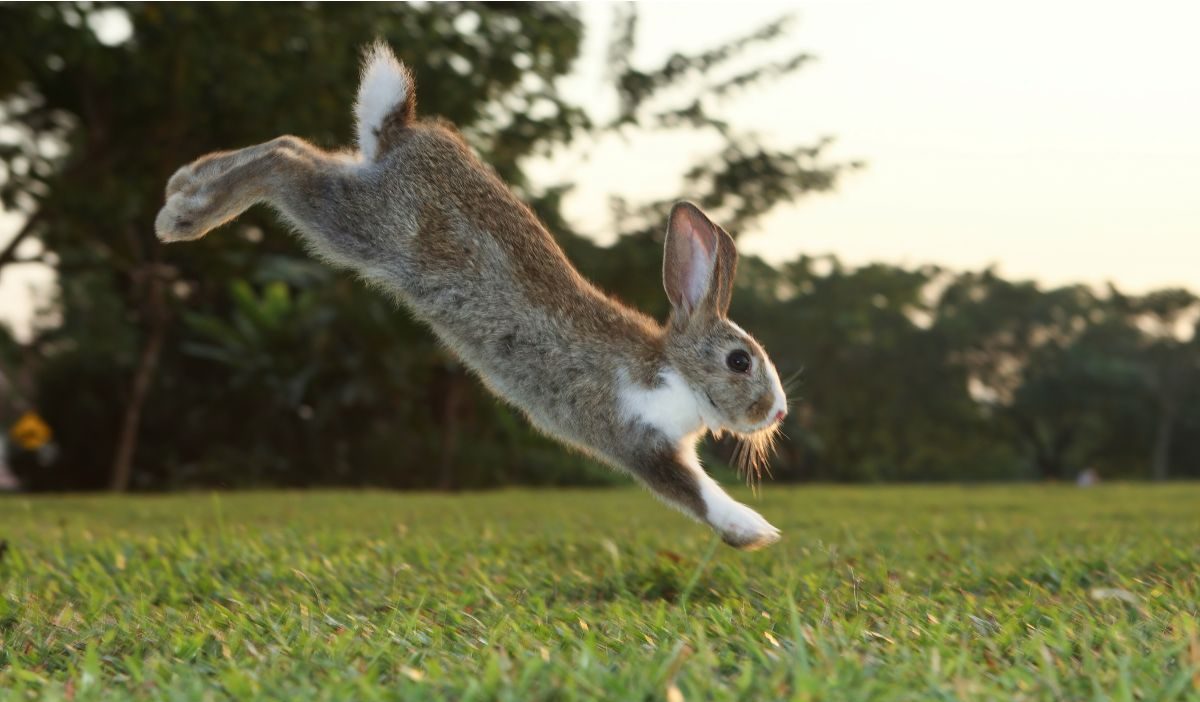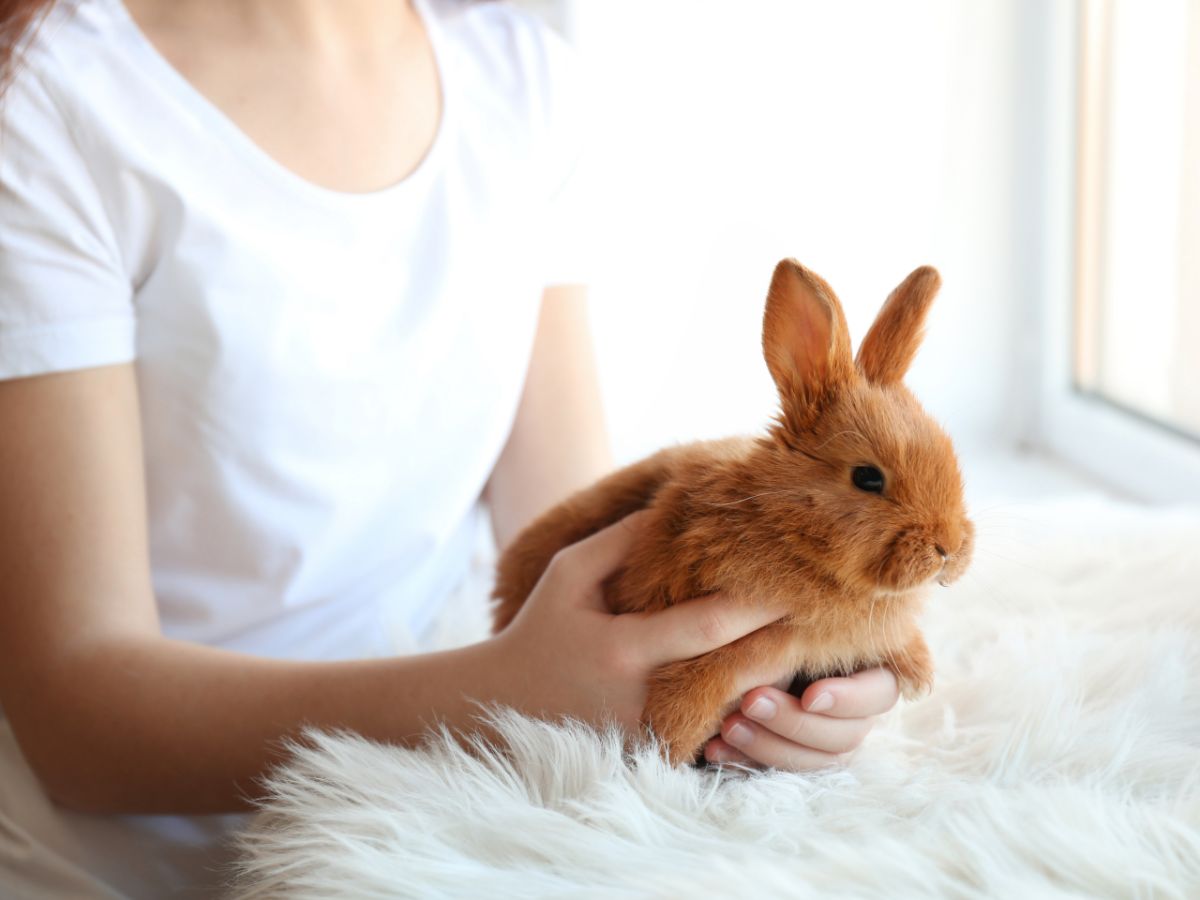I started to notice that my rabbit began putting on weight, and I saw that my rabbit quickly gets tired lately, and I am concerned about this. I care for the little fellow and want him to live a happy and healthy full life, so it made me wonder: how much exercise does a rabbit need?
Experts advise that rabbits need a minimum of 4 hours of exercise daily. Rabbits can get their exercise through running, playing with toys or other rabbits and hopping. They need to be as active as possible during the day to get the quality of exercise needed to keep them healthy.
As soon as I realized my rabbit was beginning to look overweight and I saw that he gets tired very quickly, I started looking into the reasons. I learned a lot through research and by consulting with my vet. He advised that lack of exercise can easily cause my rabbit to become overweight and even sick; here is what I found.
Contents
How Much Exercise Does A Rabbit Need?
I learned through research and expert advice that your rabbit needs a minimum of 4 hours of exercise daily to ensure that your rabbit will be fit and healthy. If you keep your rabbit in a hutch, your rabbit will at least need 3 hours outside of the enclosure to move around freely to get the daily exercise it requires.
What Can Be Done To Give A Rabbit The Exercise It Need
There are different ways that you can help your rabbit to ensure it will get the minimum daily exercise it needs. You can add play items that can help to serve as exercise equipment; some items include:
- Ramps or wheels to run on.
- You can add buckets and containers such as boxes filled with hay to jump in and out of their enclosure.
- Boxes that are stacked for your rabbit to hop on and off.
- Create cardboard or PVC tube tunnels big enough for your rabbit to run through.
- For trained rabbits, you can use a leash. Rabbits can be trained to wear a harness and can be walked with a leash.
- Create a digging box for your rabbit, which can be done using a cardboard box that is big enough for your rabbit to sit in easily. Seal the box and fill it with sand/dirt, allowing your rabbit to dig.
- Create hiding places and tunnels for your rabbit. This playful act ensures your rabbit moves and is active and provides exercise.
Precautions When Taking Rabbits Outside To Exercise
If you allow your rabbit some exercise time outside, there are precautions you will need to take to ensure its safety outside its cage. Plan your rabbits outside play area in an enclosed space in your yard with no access to predators.
Predators to rabbits can be animals such as cats, both domestic and wild, dogs, wolves, snakes, and birds of prey like falcons and hawks can all be harmful and dangerous to rabbits. If you have dogs or cats, create a space where your rabbit can move and play freely without the risk of your cat or dog accessing your rabbit.
And if you live in an area where other predators can access your rabbit, create an enclosed and covered outside space that will be safe for your rabbit.
When creating your rabbits outside exercise or play area, ensure there aren’t plants that are poisonous to your rabbit surrounding the area. Plants toxic to rabbits include Azalea, Ivy, Buttercups, and Rhubarb; these are just a few.
You will need to thoroughly research poisonous plants that can harm your rabbit to ensure the outdoor space you will let your rabbit exercise during the day isn’t surrounded by any plants that are toxic to your rabbit.

Tips When Creating An Outside Exercise Area
When building your rabbits outside exercise area, dig an area where you plan to develop this space for your rabbit about 12-18 inches deep or around 3 feet, and cover the floor section of this area with mesh wire or Hardware cloth. Avoid using chicken wire.
The mesh wire must be 12 gages 2.5 mm and the Hardware cloth ½ inch. And recover this area with the dug-out dirt; this will prevent your rabbit from digging out of this area and predators from entering the play and exercise area from the bottom.
With the completion of your rabbit’s outside area, you can add strewn straw or hay to the area where your rabbit can roll and exercise and play hide and seek. It will contribute to exercise and the stimulation of your rabbit.
The outside play and exercise area will ensure enough space for your rabbit to run and get exercise. You can also add grass areas and create platforms to encourage your rabbits to exercise, such as boxes to jump on and tunnels and holes where your rabbit can hide.
You can also add exercise wheels and toys your rabbit can play with, making this outdoor space roomy and inviting for your rabbit and fun and exciting. If your rabbit seems lonely, you can try getting another pet rabbit as a friend, and they can get exercise through playful acts.
Rabbits need as much exercise and stimulation as you can give them. Rabbits can quickly become lazy if they don’t have enough space to move around. Moving and being active forms part of their exercise routine.
Exercise is vital to your rabbit’s health. Lack of exercise can lead to your rabbit becoming obese and can cause digestive problems, and their breathing can suffer due to lack of exercise. They can develop heart disease, painful arthritis, and get sores on their feet, all due to no exercise and insufficient movement. Rabbits who lack exercise can also become stressed and depressed.
Conclusion
Depending on where you stay, the risk factors of predators in your area, and the plants in your garden that might be poisonous or toxic to your rabbit, you can build an outside area where your rabbit can freely move and get the daily exercise it requires, and this can serve as a play area as well.
With the correct precaution, you can build an outside area for your rabbit to play and exercise in, even in a predatory area. It is always better to give your rabbit outside space where it can move around freely, exercise, and play daily. You should rather keep your rabbit caged indoors at night where it is warmer and safer.




